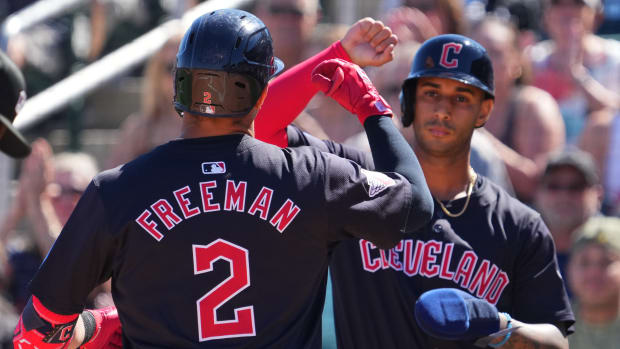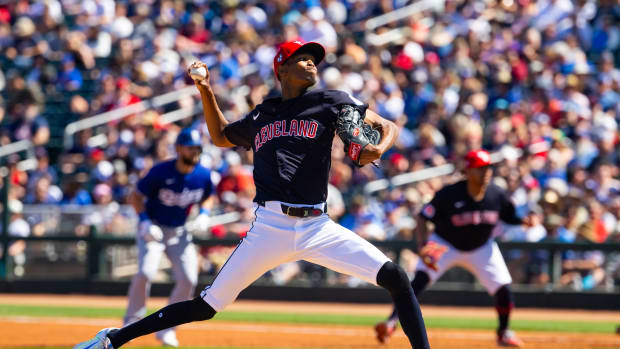How Do All the New Padres Fit Into the Indians Future?
The Cleveland Indians did pull off a deal before the Major League Baseball trading deadline, in fact, it was a mega-deal, perhaps the biggest in the game.
It was the type of deal a rebuilding team makes, the kind that accelerates the process of returning to the post-season.
However, the Indians currently reside in first place in the American League Central Division. We are sure the Twins and White Sox, the other two teams vying for the division lead are thrilled that the Tribe dealt their #2 starter, Mike Clevinger, to the San Diego Padres.
Team president Chris Antonetti and GM Mike Chernoff got a lot of talent in the transaction, they usually do. But the Indians need help right now. And once again, this seems like a trade made for the future.
Clevinger and OF Greg Allen and a player to be named later to San Diego for OF/1B Josh Naylor (whose brother was the Tribe’s first round draft pick in 2018), P Cal Quantrill, C Austin Hedges, and three minor leaguers who were in the Padres’ top 15 prospects according to Baseball America, SS Gabriel Arias (#9), LHP Joey Cantillo (#11), and INF Owen Miller (#15).
Cleveland has a glaring weakness in the outfield, where they collectively have a batting average under .200, but didn’t address it with a proven bat.
We like Naylor, a left-handed hitter, but he has 289 big league at bats. He does have great numbers away from Petco Park, a lifetime 807 OPS, and his reputation is that of a guy who works the count and doesn’t strikeout a great deal. He should get time in LF. He hasn’t faced a lot of southpaws (51 AB’s), but has 16 hits in those opportunities.
Quantrill, a right-hander, should claim a spot in the Tribe bullpen, and could convert to the rotation next spring. A former 8th overall pick in 2016, he has a 2.60 ERA in 17 innings this year, with 18 whiffs.
Hedges is 27 and has been around for six seasons in San Diego. He’s an excellent defensive catcher, which is what the Tribe wants in the position, but can’t hit. He has a career .199 average (616 OPS). He’s not eligible for free agency until 2023.
As for the prospects, Arias and Cantillo haven’t played above the Class A level. Arias has some pop in his bat (17 HR last season), but strikes out a lot (over 128 in his last two minor league seasons). Cantillo is a power arm, with 144 punchouts in 111 innings in 2019.
Miller is older (23) and has a lifetime minor league batting average of .307 (808 OPS), and primarily is a second baseman. He probably would have been at the AAA level this year, if there was a minor league season.
Still, fans should be disappointed that Naylor was the only thing done to correct a huge weakness on a contending team, especially when the Indians gave up perhaps the best pitcher on the market. While Clevinger was the Tribe’s #2 starter, he’s an ace for most teams in the league.
Meanwhile, Cleveland still has a gaping hole in CF, and apparently, the organization spun the wheel and it landed on Oscar Mercado, who will get another opportunity according to some.
The Indians made a deal from depth, because they can replace Clevinger with Zach Plesac, who will start Tuesday night in Kansas City and they still have Triston McKenzie in the rotation. And they have Adam Plutko, Scott Moss, and Logan Allen, among others in reserve.
However, they didn’t get the professional bat they desperately needed, and that’s why there is a tinge of regret in the move. Perhaps Naylor fills the void, but again, no one will know right away.
What the Tribe did was add more prospects to an already strong farm system, particularly at the lower levels. And while Arias has some ability, Cleveland is filled with prospects who play middle infield spots, including four of their top ten players.
Remember the old kids game, Kick the Can? That’s what it seems the organization is doing, kicking the can down the road of contention. They are getting like the Browns in terms of promising to try to be all in next season.
It’s a strange move by a team in first place. Instead of making a deal to put them over the hump in 2020, the Indians looked toward 2021 and beyond.




